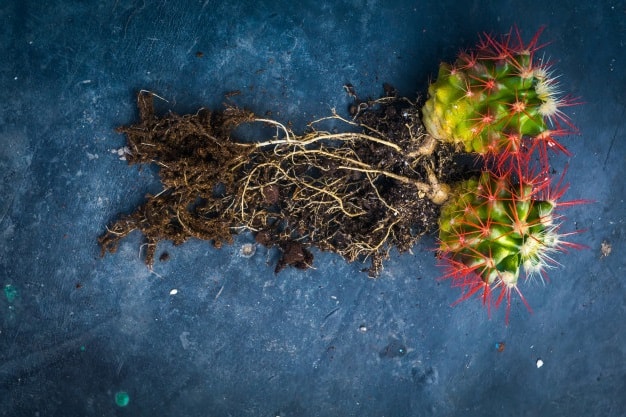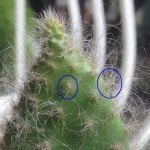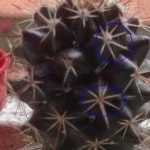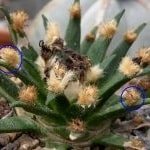Cactus Parts 101: Mastering the Characteristic Trio
Cacti are not your typical garden plants. They have some very unique parts that make them stand out from shrubs and other plants. While cacti do share some basic parts with other plants like roots, flowers, fruits, stems, and leaves, they also have three really cool and distinctive parts that we’re going to explore.
The 3 Unmistakable Cactus Parts

1. Areolas
These little rounded areas are totally unique to cacti. They are what help identify the vast number of different cactus species out there. Areolas are where the spines and flowers grow from on a cactus. They are usually rounded lumps covered in hair or sharp thorns. The thorns are probably the most famous cactus feature!
Areolas can be whitish or brown in color and tend to stay active for a few years. They leave behind lots of spines stuck to the cactus stem, unless they get knocked off by the environment.



2. Stem
The stem is the part that allows cacti to be succulents – plants that can store lots of water. For some cactus species, the stem can hold up to 90% of the plant’s total weight in water! This water storage ability helps cacti survive hot, dry climates.
Depending on how much water is available, a cactus can swell up and change shape. Its typical ridges or grooves might even disappear when very hydrated, like with the Cereus cactus. Or the stem gets very wrinkled if water is scarce. Amazingly, one cactus branch can be well-hydrated while others are shriveled up.
Most cacti are green for photosynthesis, but unlike typical plants, they don’t take in carbon dioxide and release oxygen during the day. That would make them lose too much precious water. Instead, they convert sunlight into special chemicals during the day, then use those chemicals as energy to do photosynthesis at night when it’s cooler.
At the top is the cactus crown or growth area where new stem segments sprout from as the cactus gets taller.
You can find cactus stems in different shapes too:
- Globe-shaped or spherical
- Flat pads that look like dropped raindrops
- The classic cylindrical or columnar shape
3. Roots
To live in various soils and climates, cacti roots have adapted in awesome ways. Different cactus species have specialized roots to fit their particular survival needs.
The 4 main cactus root types are:
- Taproot: One thick, central root that grows straight down with smaller side roots branching off
- Fibrous roots: Lots of thin, branching roots spreading out from the stem
- Swollen roots: Gets really wide at the base, broader than it is long like a turnip
- Tuberous roots: A thick, fleshy storage root with new shoots at one end and regular roots at the other
So those are the areolas, stems and roots – the super cool parts that make cacti so unique! With these special adaptations, cacti can thrive in hot deserts and other harsh places that very few plants can handle.
